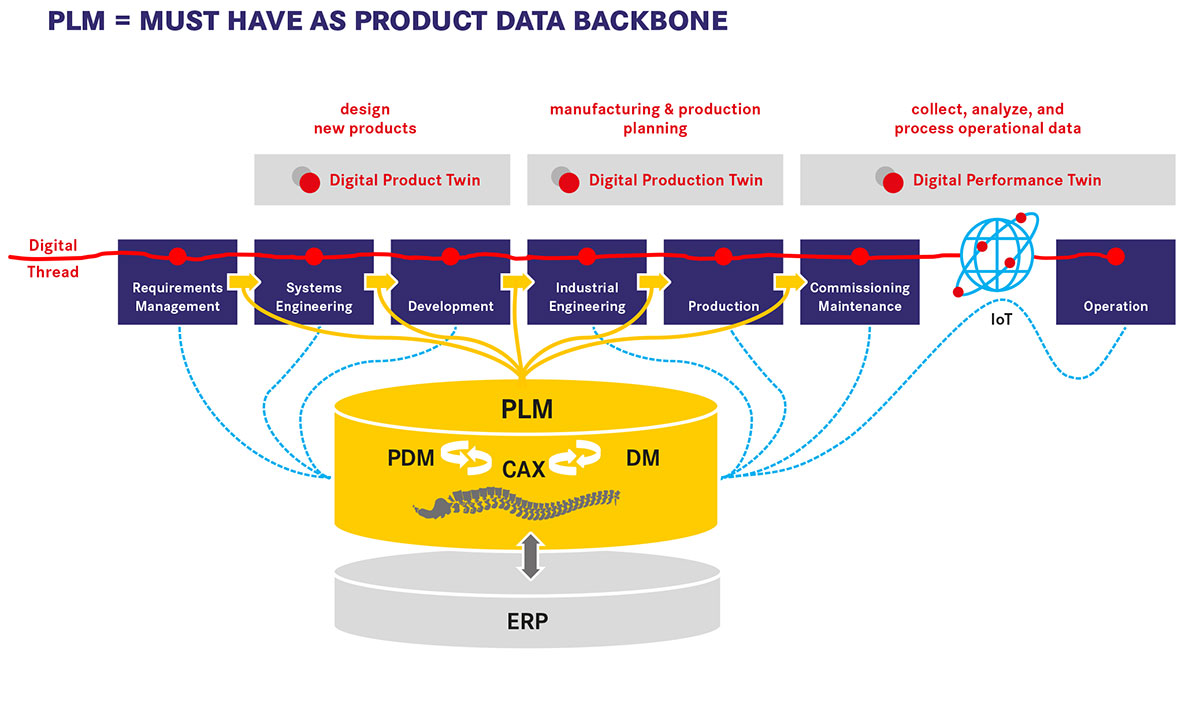The backbone of the digital twin
How Product Lifecycle Management (PLM) systems enable the digital twin
tec.news in conversation with Dr. Ing. Clemens Wölfinger about Product Lifecycle Management (PLM) System
A product lifecycle management (PLM) system is the basic precondition for linking digital product data, implementing digitised processes and controlling product-related information flows throughout the entire lifecycle of products. Ensuring data quality and efficient processes from design and development through to production, as well as professional product care, maintenance and spare parts assurance are important steps towards the successful implementation of digitalization. Consequently, a PLM system is also a necessary precondition for the digital twin.
The digital twin is revolutionising the entire field of product development, production and product maintenance. Assuming professional implementation, its three variants enable significantly faster and more cost-efficient product development, production and maintenance and are playing a vital role on the road to Industry 4.0.
The "Digital Product Twin", the "Digital Production Twin" and the "Digital Performance Twin" are united within the so-called Asset Administrative Shell and connected by the digital red thread.
-
The Digital Product Twin covers the design and development of new products, reducing the need for prototypes and providing cost-effective product validations.
-
The Digital Production Twin supports the development, optimization and validation of production processes, parameters and tools.
-
The Digital Performance Twin is the digital representation of the individual, actual products, enabling end-to-end data collection and thereby the use of data throughout the entire product life cycle.
Product lifecycle management forms the foundation for the digital twin in all its manifestations. It comprises all information that flows in from the corresponding data levels and phases for the respective product and its components. This digitalization of data is enabled by the current tools for product data management and CAX systems.
The digitalization of processes takes things a decisive step further. This enables the preparation and linking of all product data in order to not only record it in the various processes and life cycle stages, but to make this data usable across all phases. This necessitates a PLM system that maps all the relevant data over the entire product life cycle, links them in a meaningful way and thereby makes them fully usable.
This all adds up to the concrete benefits of the digital twin and consequently the necessity of investing in the underlying PLM system:
With regard to design, development, production, maintenance and further development, processes are accelerated, costs reduced and profitability raised. In parallel, continuous product improvement is enabled, with ensuing repercussions on safety, flexibility, evolution, effectiveness, efficiency and maintenance. All this stands within the context of a global company with the aim of working effectively with suppliers and customers.
Good reasons for HARTING to rely on a modern PLM system and to introduce it professionally, including the success critical process optimizations - and thereby paving the way for the digital twin


